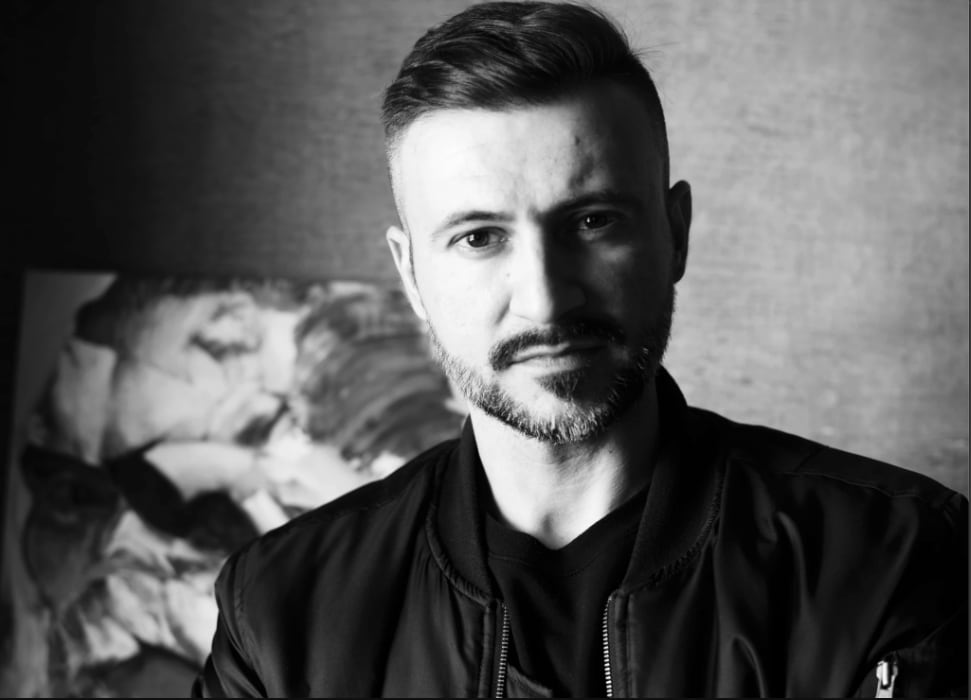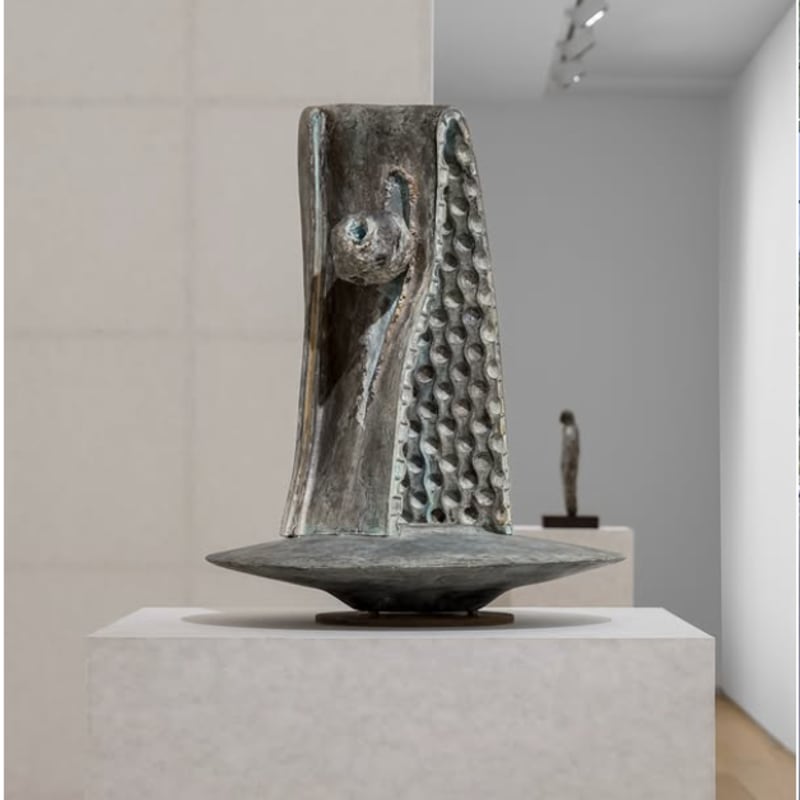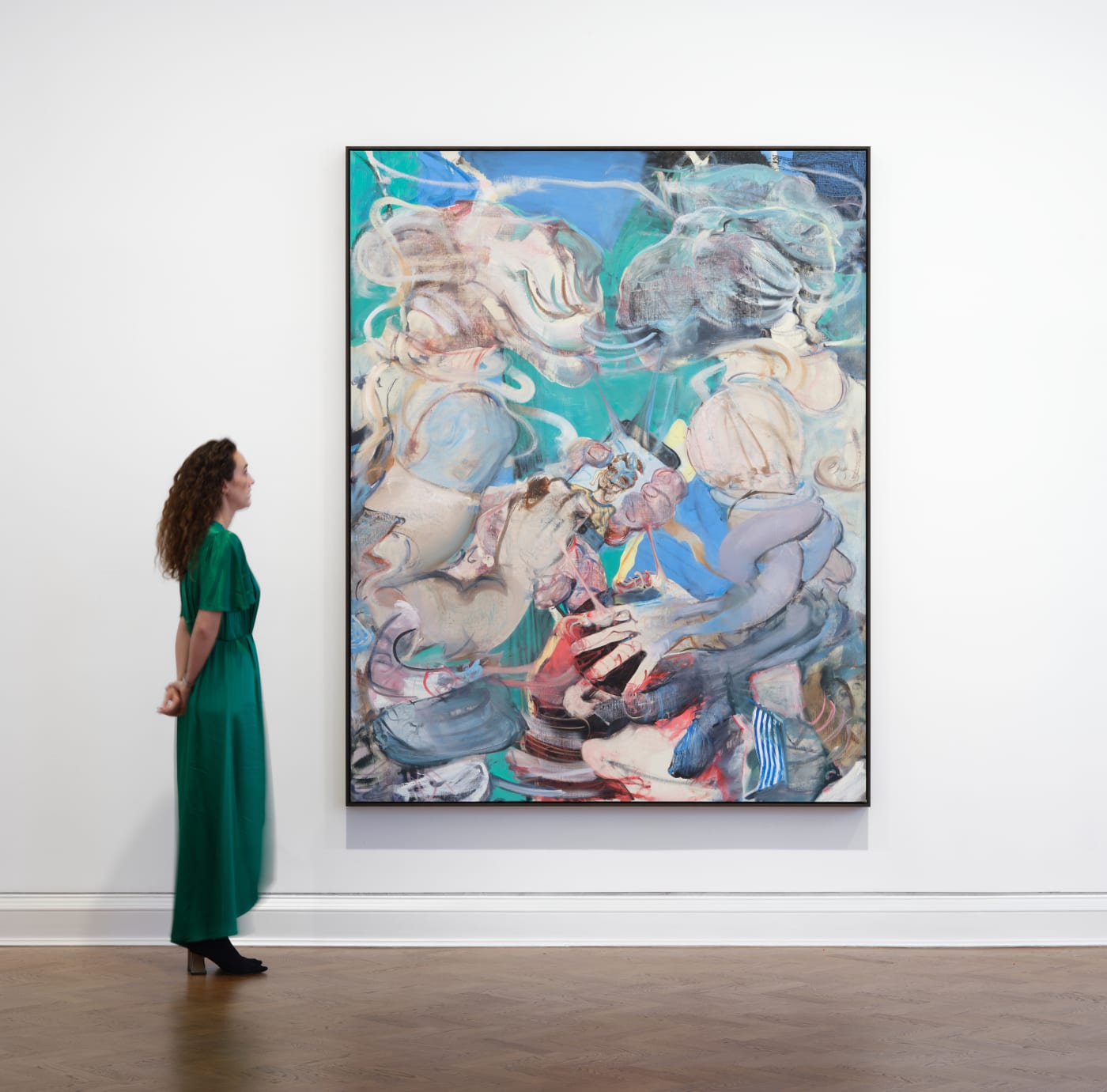
Oil on canvas
240 x 190 cm (94.49 x 74.8 in)
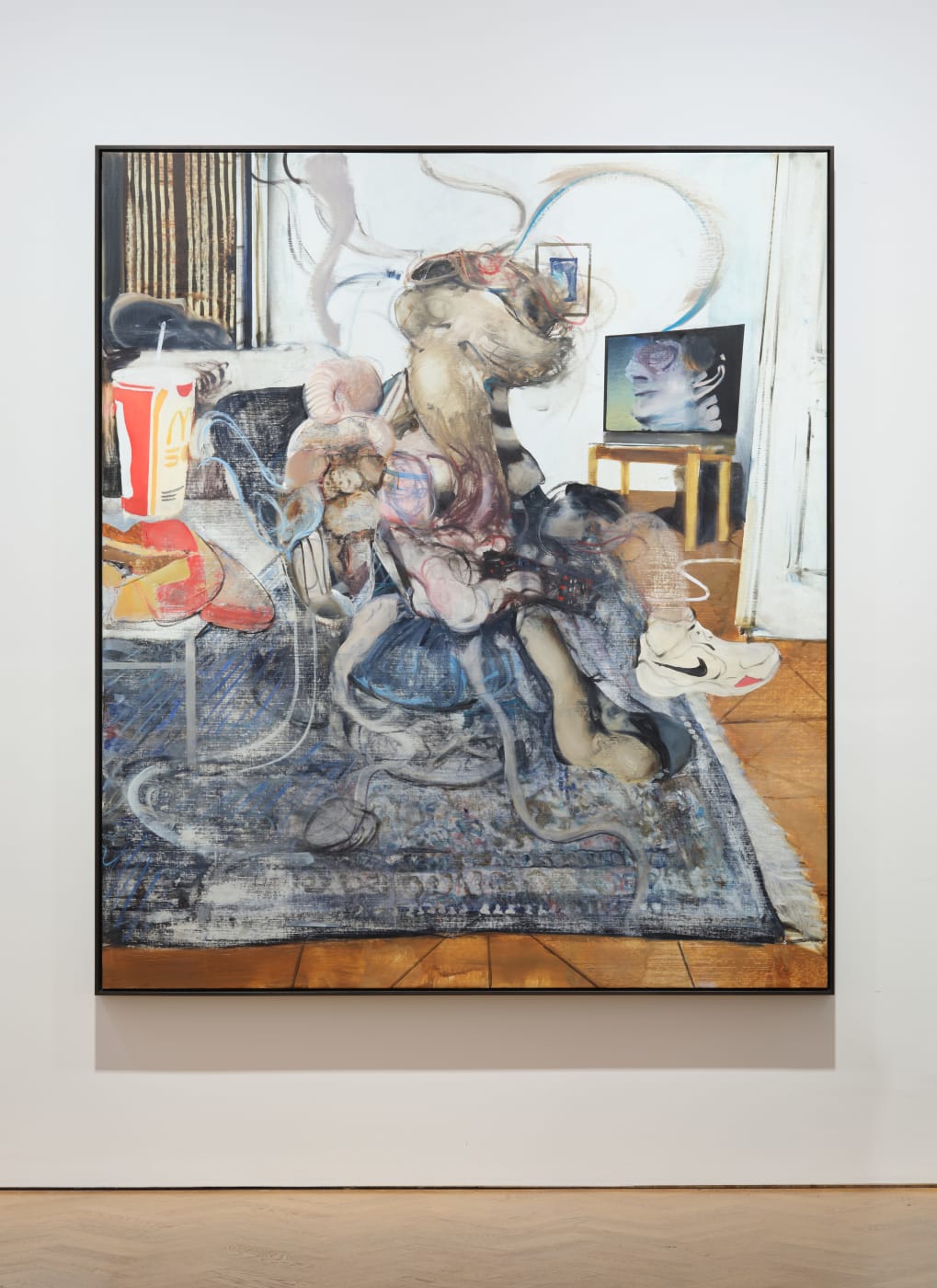
Recognisable objects function, in the artist's words, as 'a hook to situate the viewer in reality.' In Figure with Remote Control (2022), discarded fast-food wrappers, a television and Ghenie's signature Nike trainers are the most legible elements of the painting. Together, they contextualise the contemporary landscape of the Digital Era within the domestic setting of the artist's flat.
Figure with Remote Control, 2022
Oil on canvas
205 x 178 cm (80.71 x 70.1 in)
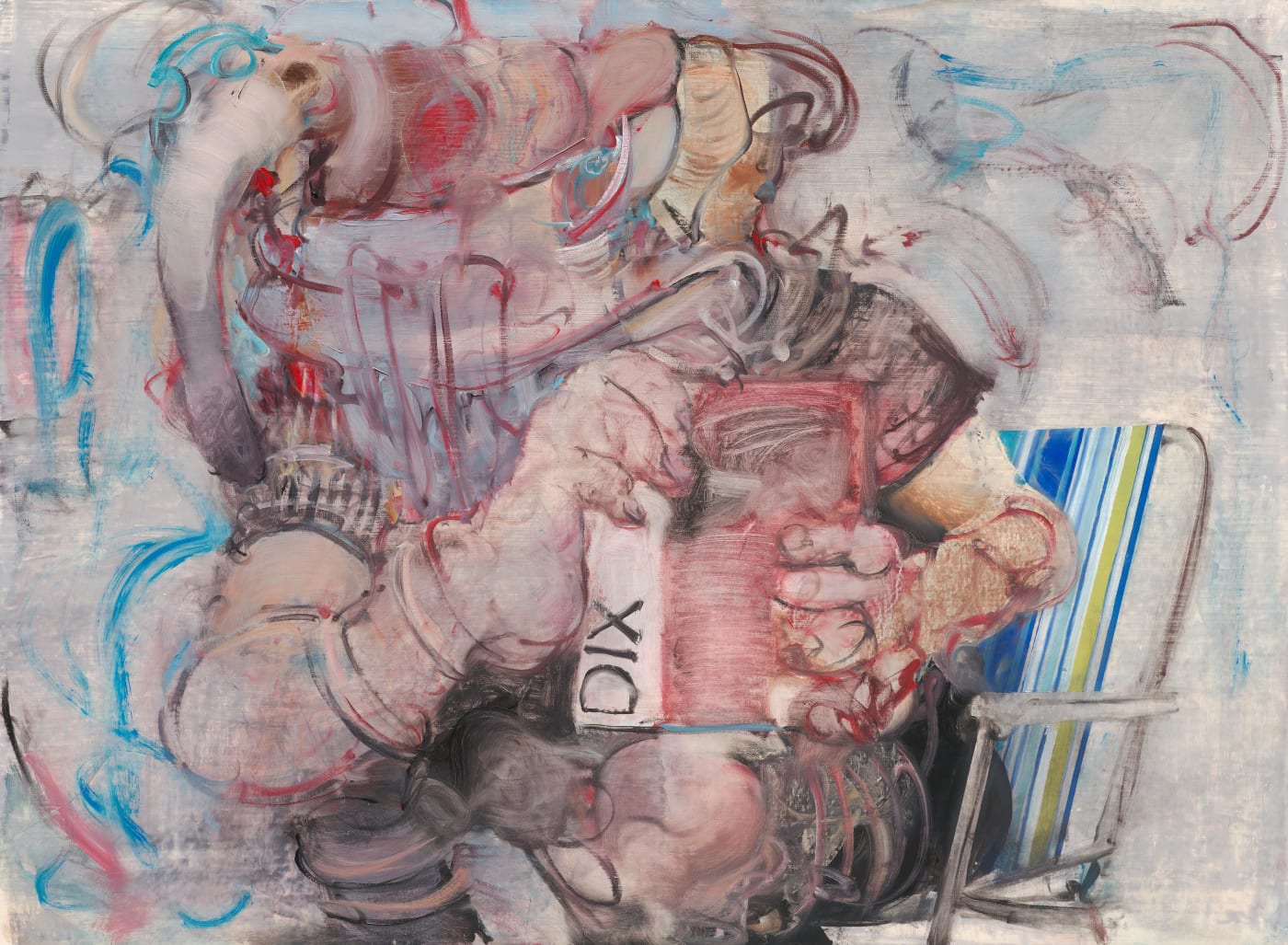
Oil on canvas
103 x 140 cm (40.56 x 50.11 in)
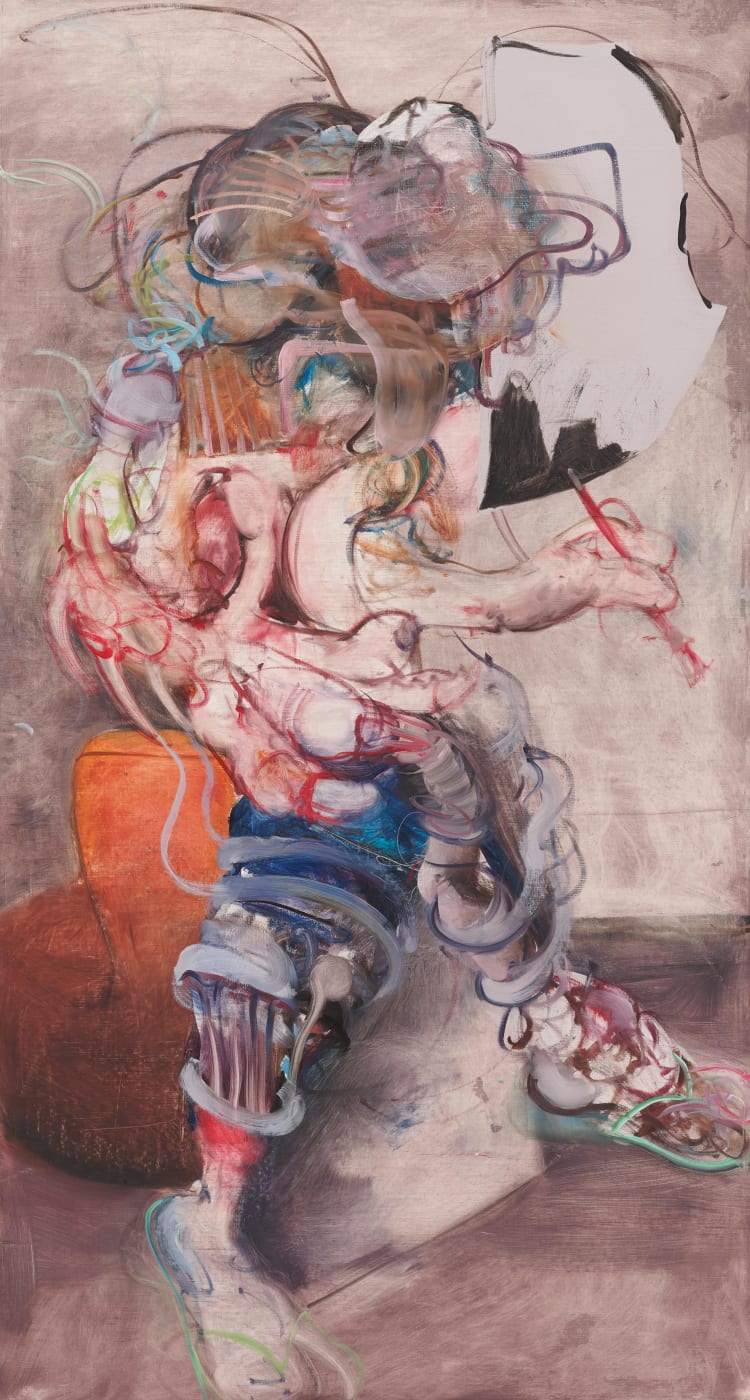
Studio Scene 3, 2022
Oil on canvas
205 x 110 cm (80.71 x 43.31 in)


Oil on canvas
140 x 140 cm (55.11 x 55.11 in)
Oil on canvas
140 x 140 cm (55.11 x 55.11 in)


This innovative drawing technique informs new developments in Ghenie's painting practice. Earlier works are characterised by thick impasto and gestural swathes of paint applied with a palette knife. In contrast, the recent works take a more linear approach as the medium is applied thinly with a small brush. He compares these works to 'coloured drawings', collapsing clear distinctions between mediums in a style evocative of the figurative works of Austrian artist Egon Schiele.
Study for "Studio Scene 2" 2, 2022
Charcoal on paper
100 x 65 cm (39.38 x 25.6 in)
Study for "Studio Scene" 3, 2022
Charcoal on paper
100 x 65 cm (39.38 x 25.6 in)



